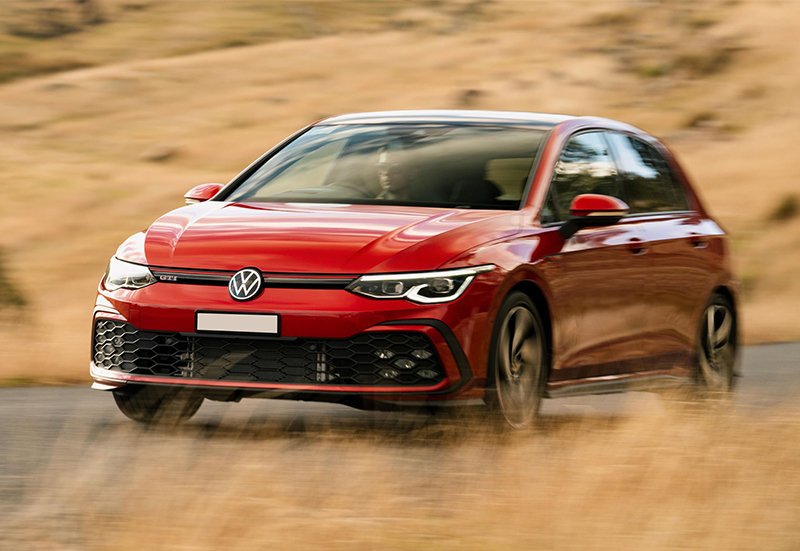Used Car Checklist: 13 Things to Consider When Buying Used in 2023

In case you weren’t aware, now is an excellent time to buy a used car in Australia for several reasons.
The COVID-19 pandemic severely disrupted the automotive industry, leading to a slowdown in new car sales and an increase in demand for used cars. As a result, there is currently a large supply of quality used vehicles on the Australian second-hand car market.
This provides buyers with a wider selection to choose from than in previous years and, crucially, gives them more bargaining power to negotiate prices too.
Another reason why now is a good time to buy a used car in Australia is due to the current economic climate. With many people feeling the financial strain of the pandemic, purchasing a used car can be a more affordable option compared to buying a new one.
Additionally, with more people now allowed to work from home as part of their regular 9-to-5, there is less demand for cars at present, leading to a drop in prices.
So, if you add to the mix the wide availability of financing options, and the fact that interest rates are still quite low, you have a situation which is very favourable to second hand car buyers.
If you are interested in taking advantage of this, here are 13 things to consider when buying a used vehicle.
What to do prior to purchasing a second-hand car?
When buying a used car in Australia, it is important to take some precautions before making a purchase. This will go a long way to ensuring that you secure a good deal and do not end up buying a lemon.
Before you start looking for a used car, the first thing you should do is determine your budget and stick to it. This will help you to narrow down your options and avoid overspending.
You should also take the time to research the make and model of vehicle you are interested in. Be sure to look up reviews, reliability ratings, and common issues with any car you like the look of.
When buying older cars, fuel efficiency can also be a huge concern. If the car is a petrol guzzler, chances are you’ll be spending more money on petrol than you’ll be saving by buying second-hand. Be sure to check out our most recent guide on Australia’s most fuel efficient cars for guidance.
This will help you make an informed decision and avoid buying a motor with known issues.
Where to buy a second-hand car?
There are several places where you can buy a second-hand car in Australia.
One of your first ports of call should be car dealerships as many sell both new and used cars. They often have a wide selection of cars and can provide financing and warranty options too.
In addition, auctions are another excellent place to source a used vehicle. You can find them in person or via used car auctions websites.
Other options include private sellers, listings from which you might find on Gumtree and Facebook Marketplace, as well as car rental companies who often sell used cars that have reached a certain age of mileage.
Finally, car brokers can also help you find a used car that meets your specific needs and budget. Although they invariably will charge a fee for their services.
Whichever option you choose, make sure to do your research and have the vehicle inspected to ensure that you are getting a quality used car at a fair price.
What to do when you find a car you like?
When you find a car you like, you should arrange with the seller to view it.
However, before you see it in person, be sure to check the car's history. There are numerous sources online that will provide historical information on vehicles, but if you’re unsure, visit our article on how to tell if a car has finance owing on it to make sure you avoid taking on someone else’s debt. This will tell you if the car has any outstanding debts or if it has been written off or stolen.
Checklist for inspecting the car
It is important to inspect the car thoroughly before making a purchase. This way you can be sure you are getting a reliable and safe vehicle to drive around in.
Here are some key areas to focus your attention on whilst inspecting it.
Exterior: Inspect the exterior of the car for any signs of damage, scratches, or dents. Also check that all the panels line up correctly and that there are no gaps between them. Look for any signs of rust or corrosion too.
Interior: Have a proper swizz through the interior of the car for any signs of damage, stains, or odours. Make sure all the seats, dashboard, and door panels are in good condition.
Take the time to test all the electronic systems, such as the fans, air conditioning, reverse camera, parking sensors, power windows, the navigation system and stereo, to ensure they are functioning correctly.
Engine: Thoroughly look over the engine for any leaks, corrosion, or signs of wear and tear. You should check the oil level and quality, and make sure the engine starts smoothly and runs quietly.
Suspension: Check the suspension by bouncing each corner of the car. The car should rebound smoothly without bouncing excessively.
Tires: Inspect the tires for any signs of damage, wear and tear, or uneven wear. Confirm that the tires are the correct size and have sufficient tread depth.
Don’t forget to check out the spare tire too.
Radiator Coolant and Fluid: When the engine is cold, remove the cap of the radiator coolant to determine if it is clean, a nice bright colour and does not contain any particles like rust in it.
You should also check under the car and around the engine compartment for any signs of coolant, oil or other fluid leaks.
Seat Belt: This is often overlooked by excited buyers, but thoroughly check to see if the seat belts are in good condition.
Pay particular attention to whether the locking mechanism is working properly and if the belts move freely and smoothly, in both a forward and retracting motion. Also test if the steering wheel turns easily and has a stable feel to it.
Lights: Before getting in the car, you should exam if all the lights are working. This includes your taillights, indicators, number plate lights, high beam, break lights and reverse lights.
Once you turn the car on, look to see if any of the vehicles warning lights are lit up on the instrument panel when the motor is running.
If you notice that the lights are not working properly on the used car, ask for them to be replaced so you can verify it is not an electrical or wiring fault.
Transmission: Test the transmission by taking the car for a test drive. Make sure it shifts smoothly and has a good ‘feel’ to it.
Brakes: Try out the brakes by driving the car at a moderate speed and applying them gently. The car should come to a smooth stop without pulling to one side.
You might want to test their emergency stopping capability too, though it is a good idea to ask for permission if the driver is in the car.
Exhaust: Whilst driving, listen out for strange knocking sounds or noises coming from underneath the car. These could highlight wider issues with the car's exhaust system which would require further inspection.
Equipment Check: After taking it for a test drive make sure the car’s tool kit and jack and are present and correct and in good working condition.
Vehicle Identification: Just to be on the safe side, check to see if the car’s vehicle identification number (VIN) matches the VIN on all the registration papers.
It’s also worthwhile confirming the vehicle’s compliance and build dates.
Make offer, negotiate price and set conditions
By thoroughly inspecting these key areas, you can ensure that you are buying a used car that is in good condition and will provide you with years of reliable and safe driving.
Once you’ve completed these checks and you are satisfied the vehicle is one you would be happy to own, you should make an offer.
During the research you did prior to arranging to see the car, you should have determined a ‘fair’ price for the vehicle. Use this as a guide to ensure you are not paying over the odds.
When you do make an offer, be prepared to negotiate on the price. Also set the condition that the offer is contingent upon getting it thoroughly inspected by a professional mechanic.
This will help to identify any issues that may not be visible to you during your inspection.
About Shop for Cars,
Shop for Cars is Australia’s first car dealership-only online classified. Shop for Cars brings you the best quality new and used vehicles from trusted motor dealers Australia wide. Shop for Cars currently has over 12,500 cars listed for sale all from licensed Motor Vehicle Dealers ONLY.
Click here to begin your search.
DISCLAIMER: This is all based on opinion please research and consult with all relevant parties to make the best-buying decision.




